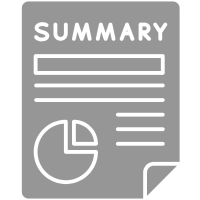RREFERENCE-BASED PRICING PLANS
Maximize Self-Funded Savings by Paying Hospitals at 120-140% of Medicare Rates
Using Medicare rates as a guide to reprice healthcare services resulting in significant savings for self-funded plans.

RBP Health Plans: Proven Track Record of Maximum Savings
Reference-Based Pricing (RBP) uses Medicare rates as a guide to reprice healthcare services. By aligning pricing with Medicare benchmarks, RBP helps employers control healthcare costs, reduce overpayments, and ensure more affordable care for employees, all while maintaining access to high-quality services. RBP plans can use two main medical network strategies:

Higher Cost RBP Model
Physician-Only Network
The plan contracts with a network of doctors and ancillary services (like labs, urgent care, and imaging) to establish pre-negotiated rates for covered services.

Lower Cost RBP Model
No Contracted Network
All healthcare services are priced using RBP, without relying on a contracted provider network, offering more flexibility but still aligning with Medicare benchmarks for pricing.
RBP Bill Repricing
A Proven Strategy for Cutting Costs
Reference-Based Pricing (RBP) offers a smarter alternative by aligning reimbursement rates with Medicare benchmarks, helping employers significantly reduce healthcare expenses while maintaining high-quality care.
How RBP Plans Work:
- Cost Control – Instead of paying high, carrier-negotiated rates, RBP uses Medicare or other benchmarks to fairly price medical services.
- Greater Transparency – Employers and employees gain full visibility into pricing, avoiding surprise medical bills.
- Flexible Network Options – Employers can contract directly with providers or use a hybrid model, pairing RBP with a physician-only network for better provider access.

RBP plans can have two funding models to choose from:
Self-Funded – Pay only monthly fixed costs, with claims funded as they occur, providing flexibility and cost control.
Level-Funded – Predictable budgeting by accurately calculating claims funding, making monthly premium payments with matching amounts deposited into a claims fund.
Empowering Employers with RBP Self-Funded Plans
Typically, RBP reimburses providers at 120% to 180% of Medicare rates, significantly lower than traditional network plans, which range from 240% to 2,000%. For optimal results, the plan must be strategically designed and, in some cases, tailored to the healthcare system within the employer’s footprint. Memberly consults on key parameters to optimize RBP strategies, as outlined below.
Memberly Guides You Through the RBP Health Plan Process

Transparency
A clear breakdown of where every dollar goes in a self-funded health plan.
Claims Funding
Stop-Loss Cost
Network Cost
Admin Cost

Cost Controls
Identifying inefficiencies and opportunities to optimize the self-funded plan.
Direct Contracts
Rx Rebates
J-Code Controls
Network Tiering

Data-Driven Decisions
Helping employers make strategic choices to balance costs and coverage.
Fixed Cost Ratio
Risk Review
Margin Forecast
Rate Analysis

Improved Performance
Maximizing the value of
every healthcare dollar
spent.
Richer Benefits
Lower Rates
Branded PPOs
Better Support
Dual Option RBP
Combining PPO and RBP in a Health Plan Provides Employees with More Choices
Integrating PPO (Preferred Provider Organization) and Reference-Based Pricing (RBP) into a single health plan offers employees greater flexibility and access to a wider range of healthcare options. This combination allows employees to choose the care model that works best for their needs, all while helping employers manage costs more effectively.

Plan A: PPO
Higher Cost Option
Hospitals Network: Aetna, Cigna, United Healthcare, or BCBS
Physician Network: Aetna, Cigna, United Healthcare, or BCBS
Stop-Loss: Individual and Aggregate
Administration: Managed by TPA
Hospitalization: Covered subject to plan terms.
Pricing: Potential savings of 20-40% less than fully insured plans.

Plan B: RBP
Lower Cost Option
Hospital Network: No hospital network. RBP is used to reprice bills.
Physician Network: Multiplan PHCS Physician-only network or no network.
Stop-Loss: Individual and Aggregate
Administration: Managed by TPA
Hospitalization: Covered subject to plan terms.
Pricing: Potential savings of 40-60% less than fully insured plans.

Featured Case Study: Aerospace Manufacturer
20 Lives
SELF-FUNDED RBP
$105,000 in Refunds and 30% Cost Reduction Over Two Years with an RBP Plan
A New England-based aerospace manufacturer was facing another 15% premium increase on their fully insured Tufts Pilgrim health plan. Memberly helped them transition to a level-funded, reference-based pricing (RBP) plan, unlocking significant savings and greater control over costs.
The plan was funded to the max, ensuring there were no concerns about covering claims—only upside when claims came in under budget.
- Year 1: $55,000 refund from unused claims funds
- Year 2: $50,000 refund, bringing total savings to $105,000
- Result: A 30% net reduction in health plan costs over two years
The company is now completing its third plan year and is on track to receive a refund comparable to previous years after the run-out period.
Manufacturer
30% Rate Reduction
15
EMPLOYEES
Referencve Based Pricing Success
A New England-based aerosopace manufacturer faced another 15% premium increase on their Tufts Pilgrim health plan. Memberly transitioned them to a self-funded RBP plan, unlocking significant savings.
Year 1: Received a $55,000 refund from unused claims funds.
Year 2: Received a $50,000 refund, bringing total savings to $105,000.
Result: A 30% net reduction in health plan costs over two years.
RBP Case Study
RBP is successfully reducing healthcare costs across the U.S. To maximize its effectiveness, it’s essential to implement a self-funded RBP plan with the right right TPA and repricing systems. Memberly provides expert guidance to ensure optimal design and execution tailored to each employer’s needs.
RBP Plan Components
Key Components of a Self-Funded Health Plan
Memberly strategically assembles the critical components of an RBP self-funded health plan, ensuring seamless integration for cost savings, efficiency, and employee satisfaction. These components work together to create a customized, data-driven healthcare solution that meets the unique needs of each employer.

TPA
Third-Party Administrator (TPA) – Manages claims processing, eligibility, and compliance, ensuring smooth plan operation.

Stop-loss
Stop-Loss Insurance – Protects employers from catastrophic claims by covering costs beyond a predetermined threshold.

Physicians
Optional Provider Network – Grants employees access to preferred doctors, and specialists at negotiated rates.

Pharmacy
Pharmacy Benefit Management (PBM) – Controls prescription drug costs by securing competitive pricing and streamlining medication access.

Containment
Includes medical bill audits, direct provider contracting, and reference-based pricing to minimize unnecessary expenses.

Support
Member Support & Navigation – Provides employees with guidance on plan utilization, provider selection, and billing issues.
Self-Funded Plan Types
Choosing the Right Self-Funded Plan: PPO, RBP, or MEC
Self-funded health plans come in three main types: PPO, Reference-Based Pricing (RBP), and Minimum Essential Coverage (MEC). PPO plans offer the broadest access by utilizing a provider network and include stop-loss coverage to protect against high claims. RBP plans, in contrast, do not rely on a hospital network but instead reimburse providers based on a percentage of Medicare rates, creating significant cost savings. MEC plans, which do not include stop-loss insurance, provide basic preventive care benefits to meet compliance requirements at the lowest cost.

PPO
Preferred Provider Organization
Hospitals Network: Aetna, Cigna, United Healthcare, or BCBS
Physician Network: Aetna, Cigna, United Healthcare, or BCBS
Stop-Loss: Individual and Aggregate
Administration: Managed by TPA
Hospitalization: Covered subject to plan terms.
Pricing: Potential savings of 20-40% less than fully insured plans.

RBP
Reference-Based Pricing
Hospital Network: No hospital network. RBP is used to reprice bills.
Physician Network: Multiplan PHCS Physician-only network or no network.
Stop-Loss: Individual and Aggregate
Administration: Managed by TPA
Hospitalization: Covered subject to plan terms.
Pricing: Potential savings of 40-60% less than fully insured plans.


MEC
Minimum Essential Coverage
Hospital Network: No hospital network. MEC plans do not cover hospitalization.
Physician Network: Multiplan PHCS Physician-only network or no network.
Stop-Loss: No stop-loss
Administration: Managed by TPA
Hospitalization: Not covered in basic MEC plans.
Pricing: $50 pepm plus claims. Same rate for EE, EC, ES, and Family.
The Self-Funded Plan Quoting Process
The quoting process for a self-funded health plan varies based on an employer’s current coverage. Memberly ensures a seamless evaluation by collecting key data to provide accurate, competitive pricing.

If already self-funded - Time to compare
By providing the most recent TPA invoice, renewal notice, census, two years of claims experience, and SBCs we can analyze cost trends and optimize plan structure to create a cost-effective, tailored self-funded solution.

Recent TPA Invoice
Include detail

Renewal Notice
Most recent

Employee Census
Including dependents

Claims Data
2 years if available

Plan SBCs
Summary of Benefits
If fully insured - Looking at options
When transitioning to self-funding, employers should provide their carrier invoice, renewal notice, census and SBCs to help assess potential savings and risk factors, ensuring a smooth and cost-effective transition.

Carrier Invoice
Include detail

Renewal Notice
Most recent

Employee Census
Including depenndents

Plan SBCs
Summary of Benefits
Starting fresh - No current health plan
If a business is uninsured, we only need a census to develop a cost-effective plan tailored to their needs.

Employee Census
Including depenndents
Common Questions
Learn More About RBP Plans

Reference-Based Pricing (RBP)
A Reference-Based Pricing (RBP) self-funded health plan is a type of employer-sponsored plan where hospital and facility claims are repriced based on a reference price, such as a percentage of Medicare rates, instead of using a traditional PPO network’s contracted rates. Physician and ancillary services may still be accessed through a leased network.
- RBP Plan: Uses Reference-Based Pricing (RBP) to determine payments for hospital claims, rather than relying on a PPO network’s pre-negotiated rates. Physician and ancillary services may still be accessed through a leased network.
- PPO Plan: Uses a leased PPO network for all services, including hospital and physician claims, at pre-negotiated rates
RBP plans typically result in 20-40% savings compared to PPO-based plans by:
- Avoiding excessive PPO network hospital markups.
- Repricing hospital claims based on Medicare rates or another reference price rather than a PPO’s negotiated rates.
- Reducing administrative and network access fees.
Many RBP plans lease a physician and ancillary-only network (such as PHCS) while allowing hospital claims to be repriced through RBP. This approach:
- Provides employees with in-network access to primary care physicians, specialists, and outpatient services.
- Avoids expensive PPO network hospital rates while still controlling costs for doctor visits.
- Allows flexibility in how hospital claims are repriced, leading to greater savings.
A third-party administrator (TPA) is critical for administering an RBP plan by:
- Processing and repricing hospital claims using RBP methodologies.
- Managing provider disputes and balance billing issues with hospitals.
- Handling compliance, claims adjudication, and member support.
- Coordinating stop-loss coverage to protect against large claims.
- Significant cost savings by avoiding excessive hospital charges.
- More transparency in hospital pricing compared to PPO plans.
- Lower administrative fees since PPO leasing costs are minimized.
- Flexibility in selecting different pricing methodologies for hospital claims.
- Balance billing risks: Some hospitals may refuse the reference-based price and bill employees for the remaining balance.
- Potential provider disputes: Hospitals may push back against RBP, requiring legal and advocacy support.
- Member education is required: Employees need to understand how the plan works and what to do if a provider rejects RBP.
Hospital claims are repriced based on a reference price, such as:
- Medicare reimbursement rates (e.g., 120%-200% of Medicare).
- A set percentage of hospital costs.
- A multiple of the hospital’s reported cost-to-charge ratio.
Employees can minimize balance billing risks by:
- Using hospitals that accept RBP or negotiating pricing in advance.
- Working with patient advocacy services provided by the TPA.
- Appealing disputed charges with the help of legal or administrative support.
Yes, stop-loss insurance is typically used to protect employers from excessive claims. However, since RBP plans often lower hospital costs, stop-loss premiums may be lower compared to traditional PPO-based self-funded plans.
Level Funding a Self-Funded RBP Plan
Level funding is a type of self-funded health plan where the employer pays a fixed monthly contribution that covers the cost of claims, administrative fees, and stop-loss insurance. This fixed amount is determined based on expected claims and administrative costs, and if claims are lower than expected, the employer may receive a refund or credit for the surplus.
Traditional self-funding involves an employer paying for actual medical claims on an ongoing basis, without a fixed contribution. The employer assumes the risk for the claims and can have significant fluctuations in monthly costs. In contrast, level funding offers more predictability with fixed monthly payments, reducing the volatility associated with claims in traditional self-funded plans.
Surplus claims funding refers to the difference between the amount the employer contributed to the plan (in the form of monthly premiums) and the actual claims costs that were incurred. If claims are lower than expected, the surplus may be refunded to the employer or credited toward future plan contributions. This is one of the advantages of level funding.
Surplus claims funding is typically returned to the employer after all claims are settled for the plan year or contract period. The specific timing may vary depending on the TPA’s terms and level funding arrangement. Some plans may return 100%of the surplus, while others may return less such as 50% in the form of a credit toward the next year’s funding or keep it as a reserve for future claims.
Level-funded plans offer the employer the ability to take on a portion of the risk but provide more predictability than traditional self-funding. The employer is still responsible for claims costs but is protected from catastrophic claims through stop-loss insurance. The fixed monthly contribution helps smooth out the risk, making it easier to budget for healthcare costs.
If claims exceed the expected amount in a level-funded plan, the employer is responsible for covering those additional costs—up to the plan’s maximum claims limit. Once that limit is reached, stop-loss insurance kicks in. This coverage protects the employer by reimbursing claims that exceed the maximum funding threshold, limiting the employer’s financial exposure to large or unexpected medical expenses.
Fixed monthly contributions in a level-funded plan are based on factors such as the employer's size, employee health risk, historical claims data, administrative costs, and stop-loss premiums. These contributions are designed to cover expected claims, administrative fees, and stop-loss protection, ensuring the employer has a predictable monthly expense.
Level funding provides several benefits for employers, including:
- Predictable monthly costs for budgeting purposes.
- Protection from high claims costs through stop-loss insurance.
- Surplus refund potential if claims are lower than expected.
- Greater flexibility and control over plan design compared to fully insured options.
- Transparency into claims data and cost management opportunities.
Yes, level funding is particularly attractive for small and medium-sized businesses that want the benefits of self-funding but may not have the resources or risk tolerance for traditional self-funding. Level funding offers a more predictable and manageable way for smaller employers to assume some risk without the volatility of traditional self-funding.
When funding a level-funded plan to the maximum, employers are essentially pre-funding their plan based on expected claims, stop-loss coverage, and administrative costs. To fund a plan to the max means ensuring that the monthly contributions cover all anticipated costs, including potential catastrophic claims. Employers can work with Memberly and our stop-loss carriers to estimate claims as accurately as possible and add a buffer for higher-than-expected expenses. The level of stop-loss protection (specific or aggregate) plays a key role in determining how much funding is needed to be “funded to the max”. By funding the plan to its maximum level, employers eliminate the risk of underfunding and ensure that the plan operates without further claims exposure while also optimizing the chances of receiving a surplus refund if actual claims are lower than projected maximum.
Sourcing Stop-Loss Insurance
Stop-loss insurance protects employers from excessive claims by setting a predetermined threshold, after which the insurance carrier covers claims. This is important for self-funded plans because it helps mitigate the financial risk of unexpectedly high medical costs.
Memberly partners with a network of reputable stop-loss carriers, offering customized solutions based on the employer’s specific plan design, risk tolerance, and funding requirements. Memberly sources stop-loss options that are competitive and tailored to each employer’s needs.
Memberly sources two main types of stop-loss insurance:
- Individual Stop-Loss (ISL): Covers claims for individual employees once medical costs exceed a specific amount.
- Aggregate Stop-Loss (ASL): Protects the entire plan if total claims exceed a set amount for the plan year.
Memberly conducts a detailed actuarial analysis based on historical claims data, plan design, and the employer’s risk profile to determine the most appropriate stop-loss coverage. Memberly then provide options for both individual and aggregate stop-loss policies.
Yes, Memberly partners with leading stop-loss insurance providers known for their reliability and flexibility. These carriers are selected based on their ability to offer competitive pricing, strong service, and comprehensive coverage options.
Yes, Memberly sources stop-loss insurance for employers of all sizes, from small businesses to large enterprises. Memberly’s tailored approach ensures that the stop-loss coverage is suitable for the employer’s workforce size and healthcare risk.
By leveraging its partnerships with multiple stop-loss carriers, Memberly is able to negotiate competitive offersfor employers. Memberly’srisk management strategies and in-depth knowledge of the market help reduce overall costs.
The process typically involves underwriting analysis, where Memberly collects claims data and evaluates the employer’s needs. Based on this analysis, Memberly presents customized stop-loss options and assists the employer in selecting the best policy for their plan.
Yes, Memberly provides ongoing support and guidance during the stop-loss renewal process, helping employers reassess their stop-loss coverage, adjust their policies based on claims trends, and explore better pricing or policy options each year.
Memberly strategically partners with high-quality, cost-effective medical networks to help lower the overall risk of the self-funded health plan. By using direct contracting with medical providers, including PPO and narrow networks, Memberly helps employers negotiate lower fees and reduce claim volumes, which in turn reduces the exposure to stop-loss claims. This strategic alignment can lead to significant savings on stop-loss premiums.



